Korean businesses venture into ASEAN in search of new opportunities
By Korea HeraldPublished : Oct. 15, 2018 - 17:46
Seeking new opportunities amid intensifying competition and a shift in the industrial and manufacturing landscape, South Korean businesses are jumping into new markets in the ASEAN region in line with the government’s diplomatic push to strengthen ties there.
Seeking to make the most of amicable bilateral relationships and the popularity of Korean culture in the region, “Korea Inc.” has set its eyes on ASEAN, a region full of emerging markets brimming with passion for economic development. Rising numbers of middle-class people, increased average incomes and greater geopolitical stability are barometers of the promise that new markets in the ASEAN region offer, experts say.
ASEAN countries have long been manufacturing bases for global companies seeking to take advantage of low-cost labor. But economists urge more strategic efforts, reflecting a greater understanding of the region. For example, targeting local consumers directly is a good investment because they have more spending power than ever before.
Seeking to make the most of amicable bilateral relationships and the popularity of Korean culture in the region, “Korea Inc.” has set its eyes on ASEAN, a region full of emerging markets brimming with passion for economic development. Rising numbers of middle-class people, increased average incomes and greater geopolitical stability are barometers of the promise that new markets in the ASEAN region offer, experts say.
ASEAN countries have long been manufacturing bases for global companies seeking to take advantage of low-cost labor. But economists urge more strategic efforts, reflecting a greater understanding of the region. For example, targeting local consumers directly is a good investment because they have more spending power than ever before.
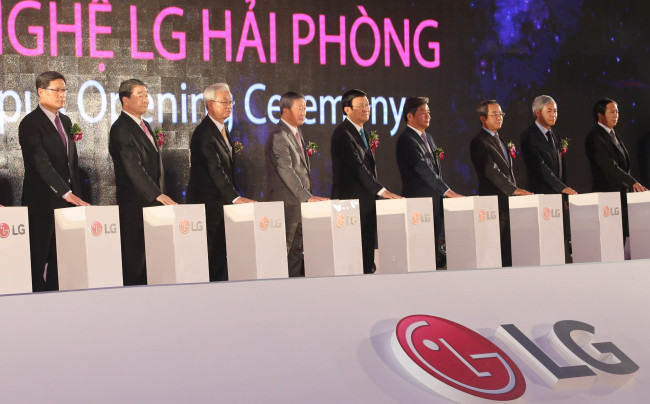
Korea’s leading tech firms are not only providing advanced IT services and products for Southeast Asian nations -- they also contribute directly to the host countries’ economic growth by making significant investments.
Ever since 2009, Samsung Electronics has operated the biggest mobile phone factory in Hanoi, Vietnam, producing most of the smartphone products that Vietnam exports worldwide.
Samsung’s smartphones accounted for around 20 percent of Vietnam’s total exports for the July-September period this year and the country’s GDP grew 6.88 percent for the third quarter, largely thanks to Samsung.
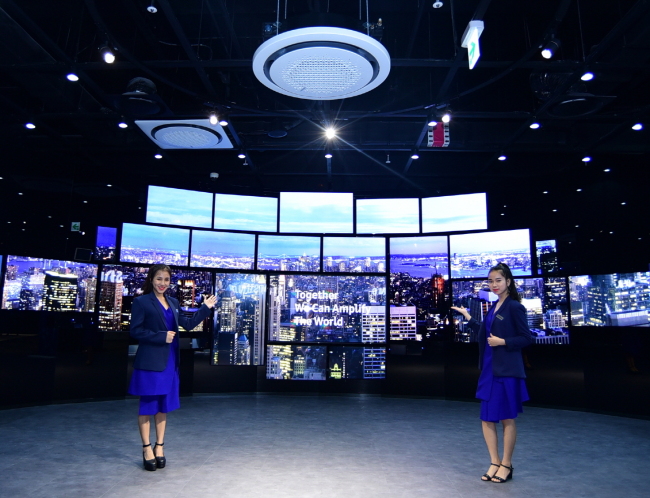
The tech titan holds various B2B and B2C marketing events in countries like Singapore and Malaysia, considering the region a new strategic foothold with significant growth potential, along with China, because it is home to young tech-savvy populations.
On Thursday in Kuala Lumpur, Samsung unveiled its newest Galaxy smartphone, the A9, with the world’s first rear quad camera.
LG Electronics operates a home-appliance plant in the northern port city of Hi Phong, Vietnam. Since 2015, it has served as a global production hub for TVs, mobile phones, washing machines and air conditioners.
The home-appliance manufacturer is planning to invest a total of $1.5 billion from 2013 through 2028.
Mobile carrier KT is making aggressive inroads into the Southeast Asian region by helping provide ICT solutions for smart cities.
LG’s battery-making unit, LG Chem, is looking at Vietnam as a steppingstone toward expansion into the global electric-vehicle battery market.
The battery maker has forged a partnership with VinFast, Vietnam’s only automaker, to build an EV battery plant and supply batteries to nearby countries including Thailand, Singapore, Indonesia and the Philippines.
Mobile Carrier KT recently signed a partnership with Vietnam’s largest construction group, the Hoa Binh Corporation, to build artificial intelligence-enabled hotels and push for smart city projects in Southeast Asia.
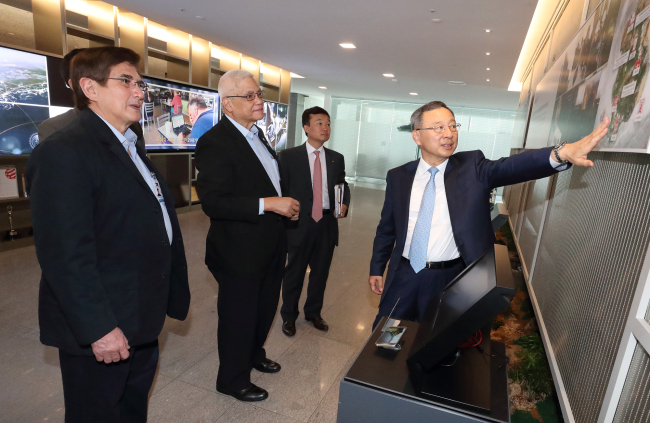
The telecom firm has also introduced ICT solutions for Boracay, a small island in the Philippines, suggesting to its government officials the possibility of turning the popular tourist destination into a “smarter” one.
In a surprise announcement, SK Group said last month that it would invest around 530 billion won ($467.7 million) to purchase a 9.5 percent stake in Vietnam’s Masan Group, the largest food and beverage company in the country, which also operates livestock, mineral and finance businesses. The announcement was the latest in a series of investment plans on the part of SK concerning the ASEAN market. The telecom-to-energy giant has been seeking business opportunities in the region by launching regional bases in Vietnam and Malaysia. It also has established an investment company in Singapore to seek further opportunities. From IT to infrastructure, SK is active in investment, having recently joined hands with Grab, the largest ride-hailing company in Southeast Asia. SK also holds a 25 percent stake in a 15-1 oil field in Vietnam.
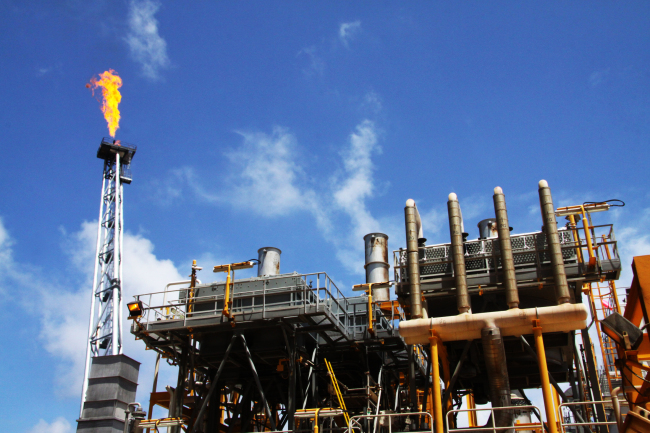
In 2013, steel giant Posco opened Krakatau Posco, Southeast Asia’s first-ever integrated steel mill, capable of producing 3 million tons, a milestone for the conglomerate. Posco and Indonesia’s state-run Krakatau Steel invested 70 percent and 30 percent, respectively, in the steel mill.

Calling Vietnam a strategic base for its global expansion, Korean textile giant Hyosung also plans to invest up to $6 billion in the Southeast Asian country, in addition to its earlier $1 billion investment.
Since 2007, the company has invested $1 billion to operate manufacturing units for spandex and tire cords in Dongnai, an industrial city near Ho Chi Minh City. With the new investment plan, Hyosung plans to engage in the chemical and heavy industry business in the country as well, the company’s Vietnam office said.
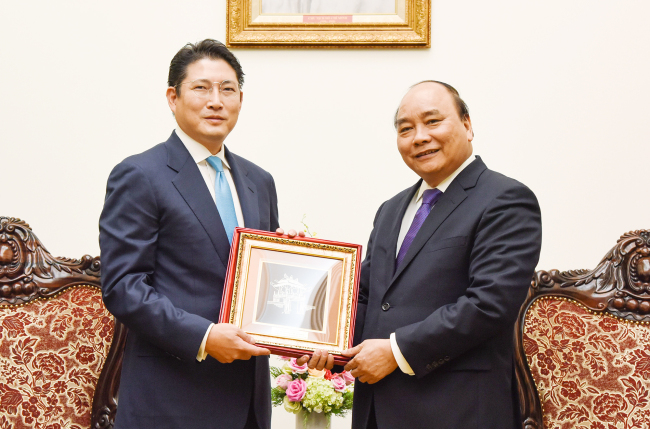
Korea’s auto industry is also shifting its focus to Southeast Asia with the country’s No. 1 automaker, Hyundai Motor, pioneering the transition.
Hyundai signed a memorandum of understanding with Indonesia’s AG Group in December last year to establish a joint venture regarding commercial vehicle sales in Indonesia.
Eyeing Southeast Asia’s growing ride-hailing market, Hyundai has also made strategic investments in Grab.
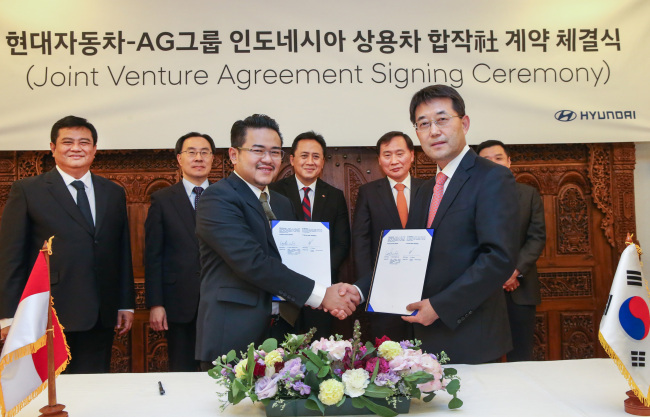
Korean auto parts manufacturer Hyundai Mobis opened a “data-mapping center” jointly with a local company at a science park in Ho Chi Minh City last year, which will promote the development of self-driving cars, the company said.
Hyundai Heavy Industries, the world’s biggest shipbuilder, landed a whopping 50 billion won deal for the first time in Indonesia earlier this year to supply engines and other crucial parts to seven power stations there, totaling some 86 megawatts, the company said.
Joining the slew of companies investing in Southeast Asia, LS Cable & System recently secured a 40 billion won project with the Malaysian government to supply extra-high-voltage submarine cables to connect the northwestern state of Perlis to the nearby islands of Langkawi.
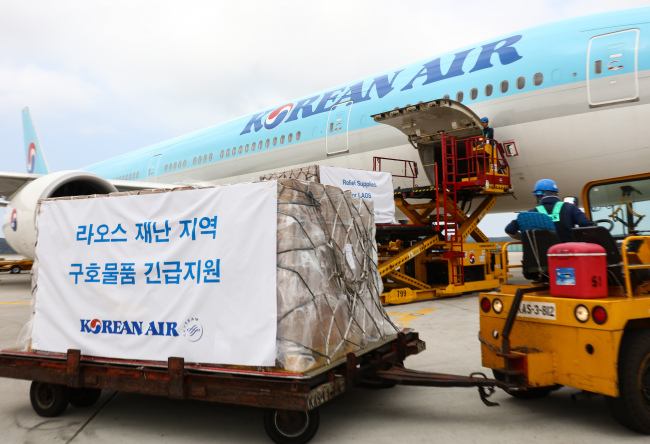
Physically connecting Korea and ASEAN, Korean Air, the nation’s flagship carrier, operates 23 routes to destinations in Southeast Asian countries.
A business venture between Korean Air Lines and Delta Air Lines Inc. is expected to expand the Korean air carrier’s operations in the region, as it has carried local travelers along 370 routes to 192 cities in the United States since its launch in May. By combining flight routes to ASEAN countries with code-share flights to American cities via Delta Airlines, industry insiders say Korean Air stands to gain a larger slice of the pie in the global flight market.
Hoping to increase its presence in the Southeast Asian defense market, Hanwha System participated in Asia Defense and Security 2018 last month in the Philippines, the company said.
In the internet and mobile technology space, Korea’s portal website giant Naver has established a formidable presence in Southeast Asia with its mobile messenger service, Line, as well as a range of platform services under the Line brand that handle lifestyle, commerce and finance content.
The Line messenger service has more than 200 million active users per month worldwide, concentrated mostly in Japan, Thailand, Taiwan and Indonesia. Its animated characters have gained popularity in the form of plush dolls and other merchandise sold under the Line Friends brand.
Today, Line is working to go beyond messaging services to dominate areas such as mobile payments and artificial intelligence platforms in its four stronghold markets.

Naver is also an active investor in Southeast Asia, having invested $150 million in the region’s ride-hailing giant Grab in August this year, together with Mirae Asset Financial Group. Through Line Ventures, Naver has also made a strategic investment in iPrice, an e-commerce aggregation service in Southeast Asia.
The Korean portal operator is achieving greater success in overseas markets, including those in Southeast Asia, with its video-messaging app Snow, which targets teens, as well as the livestreaming service app V Live, which caters to K-pop fans.
By the Industry Team (khnews@heraldcorp.com)
-
Articles by Korea Herald








![[Graphic News] More Koreans say they plan long-distance trips this year](http://res.heraldm.com/phpwas/restmb_idxmake.php?idx=644&simg=/content/image/2024/04/17/20240417050828_0.gif&u=)
![[KH Explains] Hyundai's full hybrid edge to pay off amid slow transition to pure EVs](http://res.heraldm.com/phpwas/restmb_idxmake.php?idx=644&simg=/content/image/2024/04/18/20240418050645_0.jpg&u=20240419100350)






![[From the Scene] Monks, Buddhists hail return of remains of Buddhas](http://res.heraldm.com/phpwas/restmb_idxmake.php?idx=652&simg=/content/image/2024/04/19/20240419050617_0.jpg&u=20240419175937)

![[KH Explains] Hyundai's full hybrid edge to pay off amid slow transition to pure EVs](http://res.heraldm.com/phpwas/restmb_idxmake.php?idx=652&simg=/content/image/2024/04/18/20240418050645_0.jpg&u=20240419100350)

![[Today’s K-pop] Illit drops debut single remix](http://res.heraldm.com/phpwas/restmb_idxmake.php?idx=642&simg=/content/image/2024/04/19/20240419050612_0.jpg&u=)